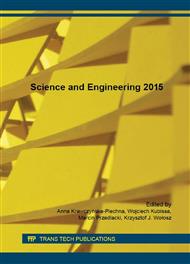p.357
p.363
p.369
p.377
p.383
p.391
p.400
p.408
p.415
Minimum Compressor Shaftwork in the Refrigeration System Thermally Coupled with a Rectification Column Network
Abstract:
There is considered the thermal separation of hydrocarbon mixtures using the rectification columns coupled, via a heat exchanger network, with a refrigeration circuit. Using the approach based on Pinch Technology, the minimum is sought of compressor shaftwork in the refrigeration system. The objective function is defined as the entropy increment resulting from the heat exchange in the heat exchanger network. The decision variables are the temperature levels of heat sinks and sources in the refrigeration cycle. An algorithm is proposed for determining the optimal values of the temperature levels of heat sources and sinks corresponding to the minimum of compressor shaftwork. The rectification columns are modeled using the ideal column approach. The numerical simulation is carried out by performing composite curves and selecting temperature levels in the refrigeration system so as to minimise the objective function. The test example is solved for a mixture of selected hydrocarbons (ethane, ethene, propene) to be separated in a sequence of rectification columns coupled with a refrigeration system. Assuming that structure of the rectification column network is known, process parameters are determined for minimum compressor shaftwork. Numerical results of the test example are presented.
Info:
Periodical:
Pages:
415-423
Citation:
Online since:
November 2015
Authors:
Keywords:
Price:
Сopyright:
© 2015 Trans Tech Publications Ltd. All Rights Reserved
Share:
Citation:


